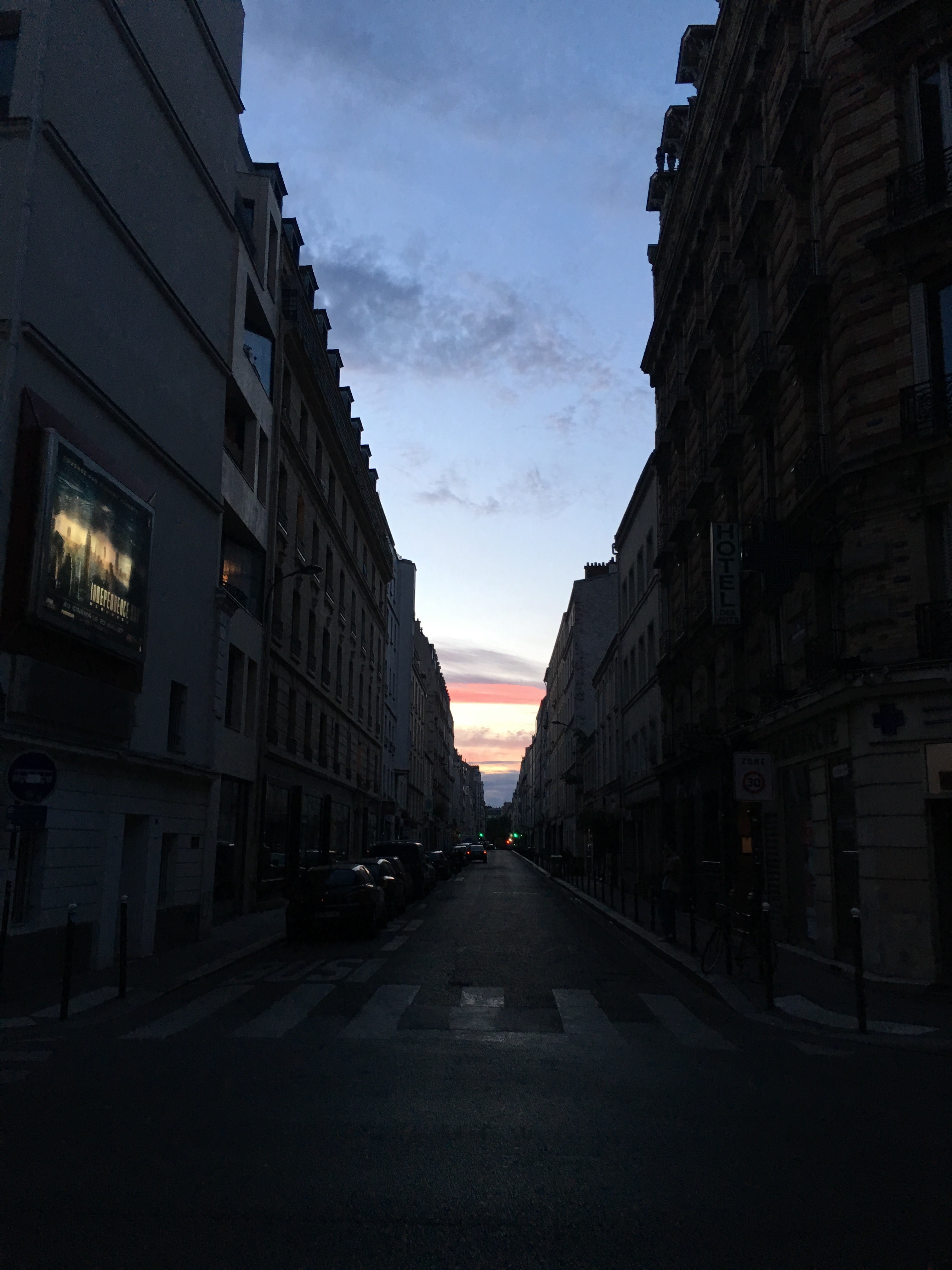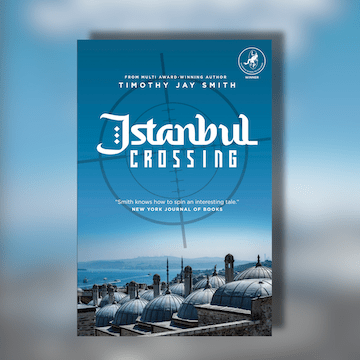Filming is under way, and Rowan Atkinson is set to star in two more Maigret programmes on ITV in 2017. The stories include Night at the Crossroads and Maigret in Montmartre, but rumour has it that they’re being shot in Budapest. What’s more, Penguin is continuing to publish its new translations of Georges Simenon’s Maigret novels at a rate of one a month. Margret’s Revolver has just come out, with Maigret and the Man on the Bench due in March, Maigret is Afraid in April, and Maigret’s Mistake in May.
Of the 76 novels in the series, 63 take place in Paris, and Simenon’s detective has a multifaceted relationship with his setting. ITV’s trip to Budapest notwithstanding, we decided to take a closer look at the man and his city, with photography to depict the locations and the mood that the author established throughout the novels.
Each photo has been uploaded at high resolution, so you can click on it to take a closer look if you wish.
Georges Simenon might just have even the most prolific author of the 20th century. He wrote over 500 novels and short stories in his 86 years, going back and forth between serious books, psychological novels – what are referred to as his romans durs – and crime fiction. However, it is the Maigret detective series that he is most remembered for. The arcades, alleys and cobbled streets of the world’s most romantic city definitely belong to Jules Maigret more than to any other fictional detective.
Have a look at our 2012 feature, picking out five of the best Maigret novels here.
The staying power of these novels, their lasting appeal, is not because of the puzzles of their mysteries, as is the case with Christie. It isn’t their incredible wit, either, the reason we reread Raymond Chandler. Nor do they capture a friendship as we see with Doyle’s Holmes and Watson. What makes us pick up a Maigret novel again and again is Paris itself, and how each book captures another nuanced corner of the city.
Yes, Maigret does travel elsewhere, but it is always done in relation to Paris. When he goes to New York he notices the differences. A seaside vacation is never quite the reprieve he wants and the city always welcomes him back with a fresh case. Paris is Maigret’s through and through.
Maigret the Parisian flaneur and cafe dweller
Paris is a city where you are constantly crossing a bridge, constantly wandering, or watching others wander as you sip an espresso or throw back a drink from one of the hundreds of cafes that line every street and boulevard. This is something George Simenon noticed when he moved there from Belgium in 1922 – remaining until World War II – and it’s something the author captures regularly as Maigret moves about the city.
The flaneur, a French word meaning stroller, lounger or loafer, figures heavily in Parisian life and culture. The flaneur has been a part of the French way of life for centuries but came to prominence as an idea when written about by the early 20th century German philosopher Walter Benjamin, drawing on the writings of Charles Baudelaire, who made the figure the interest of scholarship. If you are interested Benjamin’s idea, The Arcade Project is worth checking out.
Maigret is in many ways a flaneur. His calm, wandering style of detection, Maigret’s visits to bars and cafes, and his soaking up of the Paris that surrounds him all capture the very public and social mentality central to Paris life.
The Two Penny Bar is the 11th in the series, and is a great book to read if you are looking to take a flaneur-ish wander with Maigret through the bars and cafes. Those mentioned in the book are the less visited and seedier Parisian cafes, and are off the beaten path.
There is the Two Penny Bar itself, where:
A noisy hubbub, drowned out the music. The bargees at the bar watched the goings-on and carried on their meandering conversations…
There are visits and wanders through different quarters:
Maigret checked that there wasn’t anything in his mailbox that required urgent attention, then went on foot to the Jewish quarter, of which Rue des Blancs-Manteaux was the main shopping street, with a number of second-hand dealers… It was 8:30 in the morning. It was quite quiet.
In the 12th Maigret book, The Shadow Puppet, he covers as much ground as he does in all the novels, wandering up toward Montmartre to have a conversation about the case he is working on in a cafe:
There were in one of those little bars where all the customers are regulars. The owner watched Maigret covertly as if he were a bourgeois meeting his mistress. At the counter the men were talking about the afternoon’s racing.
He makes his way to Place des Vosges despite the cold:
The Market on Boulevard Richard-Lenoir was in full swing. The weather was so cold that the inspector turned up the velvet collar of his overcoat. Place des Vosges was close by, but he had to walk there.
One of the great joys in reading a Maigret is how we trail the Chief Inspector on his rambling. Pick up any of the books set in Paris and you will be sure to find yourself wonderfully transported to a cafe, down a street, towards a certain quarter or beside the Seine.
Maigret and the seasons
Simenon often used a season to frame a story and the distinct feeling of a time of year informed the text. Because of its wide boulevards, tree-lined River Seine, low architecture, and its walkability, Paris is a city that feels open and free and always in the throes and rhythm of the current season. The way light and weather and air play off the stones morphs each space into a new and reflective instant.
Maigret traipses through each Paris, Simenon offering seasons and specific months to inform the mood of the books.
In A Man’s Head, wonderfully translated by David Coward in the new Penguin series, Maigret sets out to prove a condemned man’s innocence in October’s chill. You are given the first signs of autumn making their way into the opening pages as a man is waiting to be released from prison:
Finally he found himself in a yard where the darkness was punctuated at round intervals by the round disk of lamps. A hundred metres ahead, in front of the outer gate, a sentry was talking to and fro… There was a slight chill in the air. The sentry by the gate stamped his feet. His breath rose in the air like a thin column of steam.
We reviewed Maigret’s Dead Man, also translated by Coward, a while back and that one starts in February just as winter is starting to release its grip:
It was February. The weather was mild with the occasional cloud plump with showers which brought sudden rain down out of the sky.
In the Two Penny Bar, previously titled The Bar on the Seine and newly retranslated for Penguin by David Watson, we get Paris in the first glorious fit of summer.
A radiant late afternoon. The sunshine almost as thick as syrup in the quiet streets of the left bank. And everything -the people’s faces, the countless familiar sounds of the street – exuded a joy to be alive.
There are days like this, where ordinary life seems heightened, when the people walking down the street, the trams and cars all seem to exist in fairy tale.
It was 27 June.
Simenon wastes no time capturing the Paris of the moment, using seasons to give us another side of this city as he wanders through trying to piece together one of its many mysteries.
Maigret and the Parisian light
Simenon used light in his books and played with our notion of Parisian light as a way to heighten the noir atmosphere.
Shadow Puppet, translated for Penguin by Ros Schwartz, uses descriptions of the many types of Parisian light to create a layered and moody backdrop. In the opening paragraph, Simenon set the tone by describing the cold November in which the book takes place.
It was 10pm. The iron gates of the public gardens were locked and Place des Vosges was empty. Glistening tyre tracks on the asphalt, the continuous play of the fountains, leafless trees and the regular shapes of identical rooftops silhouetted against the sky.
You get a sense of the emptying of public spaces with this passage and the way the autumn ends and winter takes over in Paris. The golden light of summer is now a silvery blue, and Simenon used this to set the tone for a book that, as the title suggests, will play with the cold shadows:
There were few lights under the splendid arcades, encircling the square.
And then a few lines later:
There were three cars drawn up alongside the pavement, headlamp on, red rear lights. The sky drifting clouds against a moonlit backdrop, had an ambiguous paleness. It felt as if the first snow were in the air.
All three of these images of light are used in the opening pages to create a multidimensional atmosphere true to the Parisian experience, setting the tone for what’s to come.
With Paris, you have at least three types of light to contend with at all times: the famous Paris street lamps that line every street; the light of the sky, which is never dulled by the low Haussmanian architecture; and the lights radiating out from inside every building. Shadow Puppet exploits all three to make for a moody and blue-tinged noir of the highest order.
Simenon’s Paris
Simenon’s period in Paris extended from 1922 until World War II. After the War he went to the US and Canada, before resettling on the Côte D’Azure and later Switzerland. He is said to have written his books incredibly fast. When asked how long it took him to finish a book, he said he never spent more than a week-and-a-half. Whether this was a self-perpetuated and exaggerated myth or a reality is up for debate. But what is not, is how good the Maigret novels are.
Whether it is the author capturing the season, putting us in the din of a swirling cafe, taking us on a stroll through the city streets, or giving us the long shadow created by a lone street lamp; to read Maigret is to be magically and utterly transported to wonderful Paris.



























How splendid. Seriously good stuff.
Thanks Nigel!